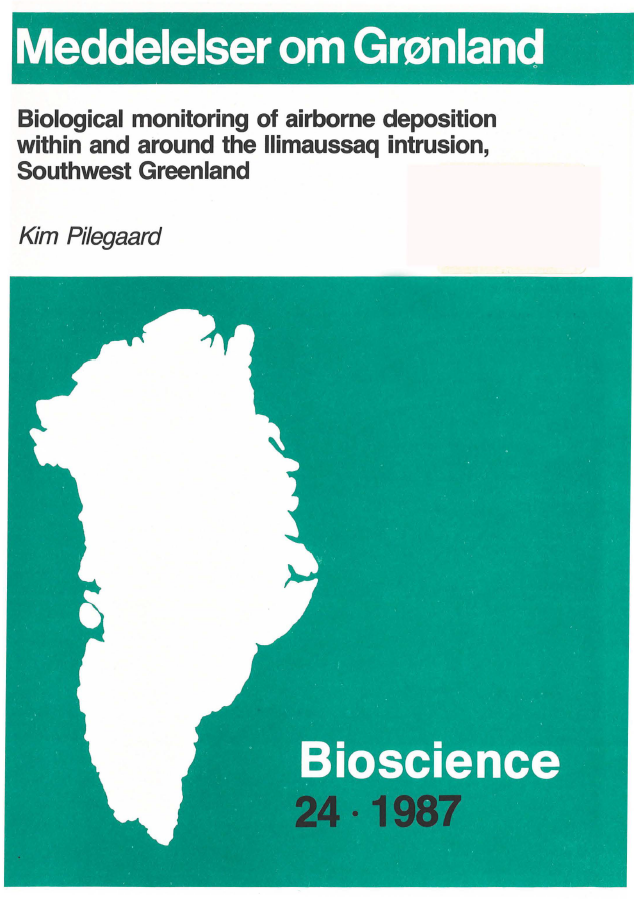Biological monitoring of airborne deposition within and around the Ilimaussaq intrusion, Southwest Greenland
DOI:
https://doi.org/10.7146/mogbiosci.v24.142357Abstract
The lichen Cetraria nivalis and the moss Hylocomium splendens were sampled within and around the alkaline Ilimaussaq intrusion in Southwest Greenland as monitors of the deposition of airborne metals and other elements. The intrusion is rich in U, Th, rare earth elements and heavy metals. The samples were analysed by instrumental neutron activation analysis (Na, K, Sc, Cr, Fe, Co, Zn, As, Se, Br, Rb, Sr, Ag, Sb, Cs, La, Ce, Nd, Sm, Eu, Yb, Tb, Lu, Hf, Ta, W, Au, Hg, Th and U) and by atomic absorption spectrophotometry (Cd and Pb).
Many elements characteristic of the rock-intrusion were found in significantly higher concentrations in plant samples from the intrusion than elsewhere. A factor analysis for Cetraria (including 28 elements determined in >70% of all samples) shows that 5 factors account for 79% of the total variation. The first factor (accounting for 52% of the total variation) included the elements characteristic of the intrusion (prominent members: Sc, Fe, Rb, Cs, La, Ce, Nd, Sm, Eu, Tb, Yb, Lu, Hf, Ta, Pb, and Th). For Hylocomium (26 elements) 4 factors account for 87% of the total variation. The first factor explained 49% of the total variance and included: Fe, Zn, Rb, Cd, Cs, La, Ce, Sm, Eu, Tb, Yb, Hf, Ta, Pb, and Th.
The source of elements found in the monitor organisms is the rocks of the intrusion, which weather into fine-grained particles subject to wind transport. Preoperational monitoring (i.e. monitoring before mining activities) is essential in areas where exposed mineralizations can act as natural sources of pollution.

Downloads
Published
Issue
Section
License
Coypyright by the authors and the Commision for Scientific Research in Greenland / Danish Polar Center/Museum Tusculanum Press as indicated in the individual volumes. No parts of the publications may be reproduced in any form without the written permission by the copyright owners.

